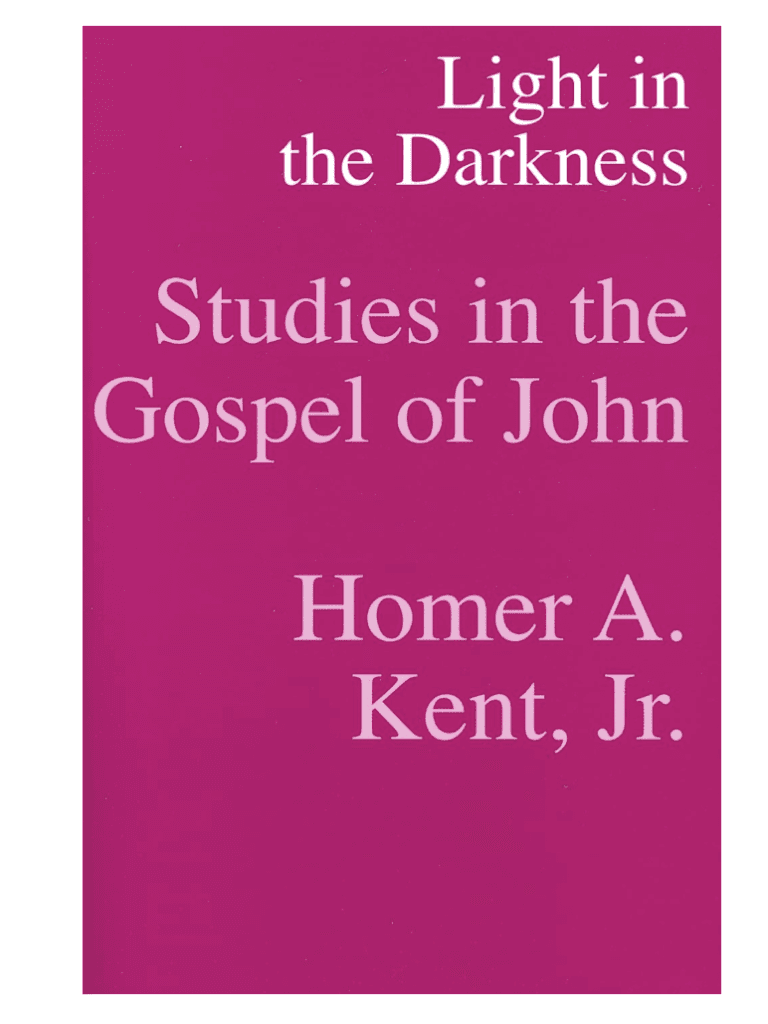No products in the cart.
The Symbolism Of Light And Darkness In The Religious Texts
This post contains paid and/or affiliate links. I make a small commission at no extra cost to you. Please see our Privacy Policy.
The Gospel of John uses symbols like light and darkness to share spiritual truths. It shows Jesus as the “light of the world.” This symbolizes his divine nature and guides believers.
Light in the Gospel of John means Jesus’ divine nature, truth, and enlightenment. It shows the way to salvation. Jesus says, “I am the light of the world. Whoever follows me will never walk in darkness but will have the light of life.”
Darkness, on the other hand, means spiritual blindness, sin, and being away from God. It shows the absence of light and evil. John contrasts light and darkness to show the fight between good and evil.
Significance of Light and Darkness in the Gospel of John
The use of light and darkness in the Gospel of John is very meaningful. Here are some key points:
- Identifying Jesus’ Divinity: By calling Jesus the “light of the world,” John shows his divine nature and role as a guide.
- Revealing Truth and Salvation: Light is linked with truth, knowledge, and salvation. Jesus’ teachings and actions bring enlightenment and show God’s love, leading to salvation.
- Confronting Spiritual Darkness: The contrast between light and darkness shows the spiritual darkness in humans. It calls for acknowledging sin and turning to Jesus for change.
- Guiding the Way: Like physical light, Jesus’ light guides believers on their spiritual path, leading to God’s presence.
- Conquering Death and Evil: Light means victory over death and evil. Jesus’ resurrection and victory over darkness promise eternal life and defeat of evil.
By looking into the symbolism of light and darkness in the Gospel of John, we understand Jesus’ mission and the power of his teachings.
We also see the path to spiritual enlightenment.
Ancient Conceptions of Light and Darkness
Light and darkness have deep roots in ancient cultures, like the Middle East. Early views saw them as complementary forces for life’s balance.
These cultures saw light and darkness as symbols of creation, birth, and renewal.
But, over time, darkness became linked with failure, corruption, and negativity. This change from complementary to binary views greatly affected the symbolism of light and darkness in religious texts.
Understanding this cultural shift is key to grasping the deep symbolism of light and darkness in religions.
The contrast between light and darkness shows the ongoing battle between good and evil, enlightenment and ignorance. It’s a powerful metaphor for humanity.

Ancient Conceptions of Light and Darkness:
- Complementary forces: In ancient cultures, light and darkness were seen as interdependent and complementary elements.
- Balance of life: Both light and darkness were considered essential for the harmonious functioning of the natural world.
- Symbolism of creation: Light was often associated with birth, enlightenment, and the renewal of life.
- Shifting perception: Over time, darkness came to be associated with negative qualities such as failure, corruption, and ignorance.
- Dualistic symbolism: The transition from complementary to binary or dualistic conceptions influenced the symbolism of light and darkness in religious texts.
By exploring ancient views of light and darkness, we can appreciate the rich symbolism in religious texts.
We gain a deeper understanding of their spiritual significance.
Darkness in the Bible
In the Bible, darkness is a symbol for many negative things. It means the absence of light and is linked to being away from God, evil, and not knowing.
Darkness is a metaphor for bad things, hiding the truth and spreading lies. It’s the opposite of light, which stands for God’s presence, truth, and saving grace.
Looking into the Bible’s mentions of darkness helps us understand its deep meaning. It shows us lessons about evil and deception. Let’s look at some key examples:
The Plagues of Egypt: Exodus 10:21-23
In Exodus, darkness is one of the ten plagues God sends to Egypt. This darkness is God’s judgment for Pharaoh not letting the Israelites go. It shows the bad results of being away from God.
The Crucifixion: Matthew 27:45
During Jesus’ crucifixion, the land was dark from noon to three. This darkness shows how serious Jesus’ sacrifice was. It’s a symbol of humanity’s sin that Jesus took on himself.
- Separation from God: Darkness means being away from God’s presence. It shows spiritual blindness and what happens when we turn away from God’s light.
- Wickedness and Ignorance: Darkness is about evil, badness, and not knowing. It shows the lack of goodness and understanding.
- Metaphor for Evil and Deception: Darkness is a symbol for evil and lies. It hides the truth and leads people away from God’s path.
By studying darkness in the Bible, we learn a lot about its meaning. It shows the difference between light and darkness. It reminds us to seek God’s truth and warns of the dangers of being away from Him.
Light in the Bible
Light is very important in the Bible. It means God’s presence, truth, and saving grace. Just like physical light, God’s light fights against sin and evil. Jesus calls himself the “light of the world”, showing spiritual light and hope.
Looking at the Bible’s light symbolism helps us understand its deep meaning. Light shows God as a guiding force, leading us to righteousness and salvation.
This symbol teaches us the value of divine light in overcoming sin and finding spiritual enlightenment.
The Power of Light Over Darkness
The battle between light and darkness is a big theme in religious texts. It shows the fight between good and evil. By exploring spirituality, we see that light can conquer darkness and bring enlightenment.
People of faith are called to spread God’s light and love. This journey helps them overcome despair and find hope, leading to salvation.
The Power of Light:
- Light is about purity, goodness, and divine enlightenment.
- It fights against ignorance, fear, and spiritual darkness.
- By embracing light, we find clarity, peace, and purpose.
- The power of light brings change, leading to spiritual growth and awakening.
The Battle Against Darkness:
- Darkness symbolizes evil, deception, and the absence of God’s truth.
- It hides the path of righteousness and veils the light of divine guidance.
- By actively confronting and dispelling darkness, individuals can overcome spiritual obstacles and challenges.
- The battle against darkness requires courage, faith, and a steadfast commitment to seeking truth.
Light is powerful in our spiritual journey. It shows us the right path and helps us see truth from lies.
Light guides us to understand our purpose and our connection to the divine.
Conclusion
We’ve learned a lot about light and darkness from religious texts. By looking at the Gospel of John and ancient beliefs, we see their big role in faith stories. They shape our spiritual journeys in many ways.
The Bible shows light and darkness as a fight between good and evil. It tells us to choose light to beat darkness.
Light means God’s love, truth, and salvation. Darkness is the opposite, showing separation, evil, and ignorance.
Light always wins over darkness in stories of faith. It brings light to our souls and guides us to enlightenment.
People of faith are called to spread God’s love and truth. The story of light and darkness reminds us of our eternal fight and the power of light.
FAQ
What is the significance of the symbolism of light and darkness in religious texts?
Light and darkness in religious texts carry deep meanings. They show important ideas in different faiths. They give us insight into spiritual stories and their deep meanings.
How is the symbolism of light and darkness used in the Gospel of John?
The Gospel of John uses light and darkness to talk about Jesus. It shows Jesus as the “light of the world.” This explores the spiritual meaning behind these symbols.
What are the ancient conceptions of light and darkness?
In ancient times, light and darkness were seen as needed for life. But later, darkness became linked with failure and corruption. This changed how light and darkness are seen in religious texts.
How is darkness symbolized in the Bible?
In the Bible, darkness means no light and is linked to being away from God. It stands for evil and hiding the truth. Darkness is a symbol of bad and lies.
What does light symbolize in the Bible?
Light in the Bible means God’s presence, truth, and salvation. It brings hope and fights against sin and evil. Jesus calls himself the “light of the world” in the Gospel of John, showing light’s power.
How does light triumph over darkness in religious texts?
Light beats darkness in many faith stories. This fight shows the battle between good and evil. People are called to choose light to beat darkness and find salvation.
What insights can be gained from analyzing the symbolism of light and darkness in religious texts?
Looking into light and darkness gives us a deeper understanding. It shows the fight between good and evil. This analysis helps us see how light and darkness shape spiritual stories in many faiths.
















